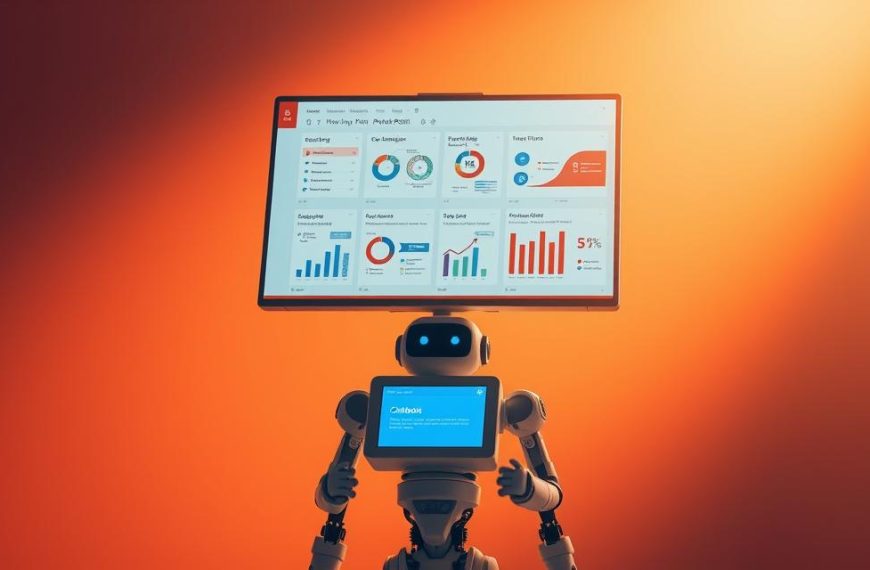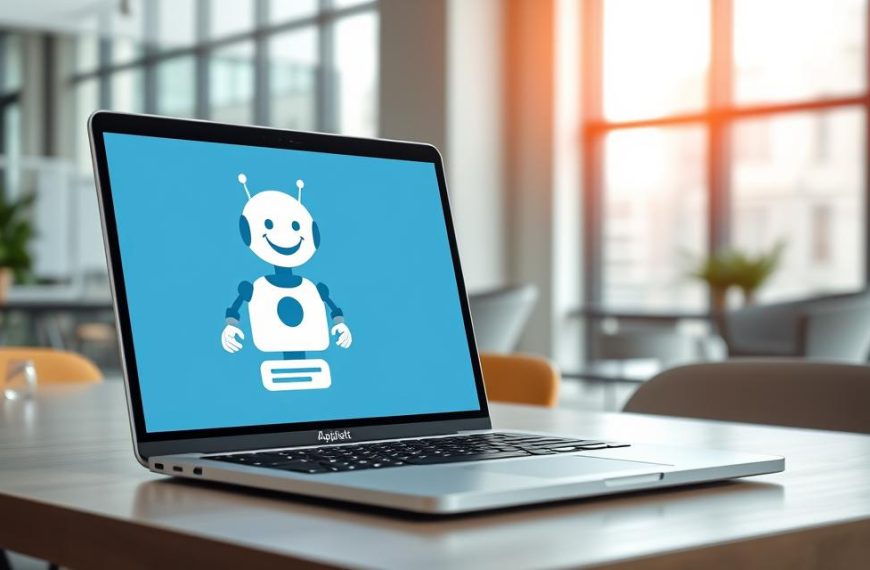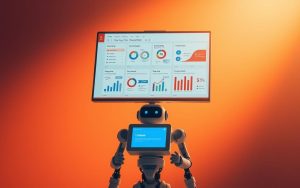AI tools like ChatGPT and AI Homework Helper are transforming how students tackle assignments. Recent data shows 65% of educators encounter AI-generated submissions, sparking debates about ethics and learning outcomes.
These platforms deliver instant answers for math problems, science questions, and even essays. With 92% accuracy, they process PDFs or images in seconds. But does this help or hinder skill development?
This article explores four benefits and four risks of using AI for schoolwork. We’ll analyze how it impacts critical thinking while saving time on repetitive tasks.
The Rise of AI Chatbots in Education
Classrooms across America are witnessing a silent revolution. Digital assistants now help learners tackle complex equations, refine essays, and even brainstorm project ideas. Nearly half of high schoolers—43%—turn to these tools weekly, reshaping traditional study habits.
Redefining Student Workflows
Kate Krugman, a junior from Ohio, describes her late-night study sessions: “When I’m stuck on calculus at midnight, AI breaks down steps my teacher explained days ago.” Unlike waiting for office hours, she gets instant clarification.
Contrast this with Bruce Matos, a Connecticut senior who worries: “Quick answers don’t build real skills. I’ve seen classmates struggle on tests after relying too much on AI.”
Key workflow shifts include:
- 24/7 access vs limited teacher availability
- ChatGPT for structuring essays
- Specialized math solvers like AI Homework Helper
The Great Education Debate
Educators remain divided. Georgia districts encourage controlled AI use, while Connecticut schools impose stricter limits. Summit Learning Charter offers a middle path—pairing AI tutors with human coaches.
“Our hybrid model teaches responsible tech use while preserving core teaching values,” explains their curriculum director.
| Approach | Adoption Rate | Key Benefit |
|---|---|---|
| Full AI integration | 42% of schools | Personalized learning paths |
| Complete bans | 38% of schools | Reduced plagiarism risks |
Four dominant AI categories emerge in school settings:
- Conversational bots (e.g., ChatGPT)
- Writing aids like Grammarly
- Visual creators including DALL-E
- Tutoring systems such as Khanmigo
As this technology evolves, so does the conversation about balancing innovation with foundational learning principles.
Can Chatbots Do Your Homework? The Pros
Digital assistants are reshaping how learners access educational support. These tools offer unique advantages that extend beyond quick answers, addressing core learning challenges.

Improving Accessibility for Diverse Learners
Speech-to-text features boost assignment completion by 40% for dyslexic students. AI-powered resources provide:
- Real-time closed captioning for hearing-impaired learners
- Text simplification for complex concepts
- Interactive quizzes with instant feedback
Supplemental Research and Idea Generation
Graduate researcher Sarah Lee uses AI to organize literature reviews. “It clusters related studies automatically, saving 10+ hours weekly,” she notes. These tools excel at:
- Generating thesis statement variations
- Identifying gaps in existing research
- Formatting citations across styles
Teaching Responsible AI Engagement
Summit Learning Charter’s certification program trains students to:
- Verify AI-generated sources
- Recognize algorithmic biases
- Use outputs as starting points, not final products
“Digital literacy now includes AI discernment skills,” states their curriculum team.
Efficiency in Study Habits
AI Homework Helper processes 500,000 free queries monthly, delivering solutions in 30 seconds. Oregon virtual schools report 25% GPA improvements after implementation. Key time savers:
| Task | Traditional Method | AI-Assisted |
|---|---|---|
| Math problem sets | 45 minutes | 12 minutes |
| Essay outlining | 30 minutes | 8 minutes |
Michael Thompson, a high school junior, shares: “ChatGPT helps me brainstorm angles I’d never consider alone.”
The Downsides of Relying on Chatbots for Homework
Academic integrity faces new challenges as AI becomes embedded in student workflows. While these tools save time, they introduce risks—from factual inaccuracies to eroded problem-solving abilities.
Risks of Cheating and Academic Dishonesty
Recent surveys reveal 14% of learners submit unedited AI content as original work. Plagiarism detectors struggle: GPTZero identifies only 72% of AI-generated text, compared to Turnitin’s 88% accuracy.
Notable incidents include:
- A Texas high school flagged 23 essays with identical ChatGPT phrases
- College admissions offices report AI-written personal statements
Reduced Critical Thinking and Skill Development
Stanford researchers found a 33% decline in library research abilities among frequent AI users. Advanced calculus error rates jump to 18%, per AI Homework Helper’s internal data.
Educators observe troubling patterns:
| Skill | Decline Rate | Evidence |
|---|---|---|
| Analytical reasoning | 68% | Professor surveys |
| Information retention | 22% | Standardized test comparisons |
Accuracy Concerns and Misinformation
One in four AI-generated essays contains factual errors. A viral case showed chatbots misidentifying WWII dates 40% of the time in history assignments.
Common pitfalls include:
- Outdated scientific theories
- Misattributed literary quotes
- Fabricated statistical sources
Long-Term Impacts on Student Motivation
Parent Liam Martinez notes his son’s declining perseverance: “He gives up instantly if the AI can’t solve a problem.” Psychologists label this homework helplessness—a dependency reducing resilience.
“Efficiency gains vanish when learners lack foundational skills,” warns MIT’s Digital Learning Lab.
Key warning signs:
- Lower self-correction attempts
- Increased frustration with complex assignments
- Reliance on AI for basic tasks
Conclusion
Artificial intelligence presents both opportunities and challenges for modern students. While it accelerates homework completion, overreliance risks weakening essential skills. Schools with clear AI policies report 60% fewer cheating cases, proving structure matters.
Summit Learning Charter’s hybrid model stands out—combining AI tools with teacher guidance. Their approach maintains learning integrity while embracing innovation. For balanced use, limit AI assistance to 30% of assignments to preserve critical thinking.
Future-ready schools should prioritize two actions: AI ethics training and verification-first tool usage. Tools like AI Homework Helper work best when checking answers, not generating them. The Department of Education’s upcoming standards will further shape responsible adoption.
By setting boundaries now, educators can harness AI’s potential without compromising foundational education principles.











